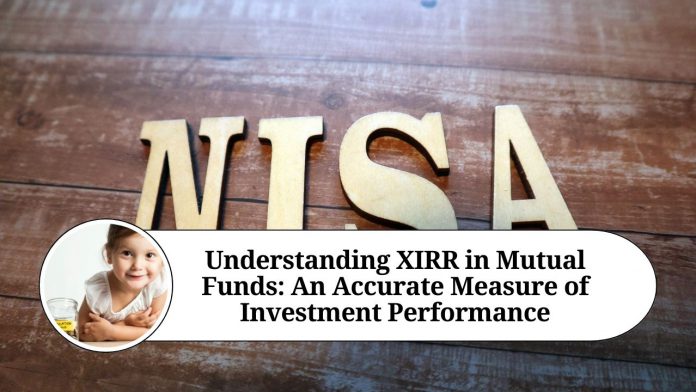XIRR or Extended Internal Rate of Return is a financial metric used to calculate the annualized return of an investment with irregular cash flows, including mutual funds. XIRR is considered a more accurate measure of return compared to other metrics like CAGR, as it takes into account the timing and frequency of cash flows. In this blog, we will dive into what XIRR is, how it is calculated, and some frequently asked questions about XIRR in mutual funds.
What is XIRR?
XIRR is a financial metric that calculates the annualized rate of return of an investment with irregular cash flows. This means that XIRR can be used to calculate the return on investments like mutual funds, where the investor has made multiple investments or redemptions at different times.
XIRR is calculated using the following formula:
NPV = 0 = ∑ (Ct / (1+r)t)
Where NPV is the net present value of the investment, Ct is the cash flow at time t, and r is the XIRR. The XIRR is calculated by finding the value of r that makes the net present value of the investment equal to zero.
How is XIRR calculated for mutual funds?
Calculating XIRR for mutual funds can be done in a few simple steps:
- Collect all the transaction details: Collect all the transaction details of the mutual fund, including the dates of purchase, redemption, and dividend payouts.
- Calculate the cash flows: Calculate the cash flows for each transaction by subtracting the investment amount from the redemption amount or adding the dividend payout.
- Use XIRR formula: Use the XIRR formula to calculate the annualized return on the investment.
- Interpret the result: Interpret the result to determine the annualized return on the mutual fund investment.
XIRR is a useful tool for investors who want to evaluate the performance of their mutual fund investments over a specific time frame. It takes into account the irregularity of cash flows and the timing of investments, making it a more accurate metric to calculate returns. It can also help investors make better investment decisions by giving them an idea of how their investments are performing.
When using XIRR, investors should keep in mind that the calculation assumes that the cash flows are reinvested at the same rate. However, this may not always be the case in real-world scenarios. Additionally, XIRR does not take into account the impact of taxes and fees on the investment returns.
Investors should also note that the XIRR of a mutual fund may not be constant over time. As the fund manager makes investment decisions and the market fluctuates, the XIRR may change. It’s important to regularly evaluate the XIRR of a mutual fund to make informed decisions about buying or selling the investment.
XIRR can also be used to compare the performance of different mutual funds or investment options. Investors can calculate the XIRR of two or more investments and compare them to make an informed decision on which one to choose.
Conclusion
XIRR is a useful financial metric for evaluating the performance of mutual funds with irregular cash flows. It takes into account the timing and frequency of cash flows, making it a more accurate measure of return compared to other metrics like CAGR. Investors should use XIRR in conjunction with other metrics and considerations, such as fees and taxes, to make informed investment decisions.
Frequently Asked Questions (FAQs)
Q.How is XIRR different from the total return of a mutual fund?
The total return of a mutual fund includes capital gains and dividends received over a specific period, whereas XIRR takes into account the timing and frequency of these cash flows. XIRR is an annualized rate of return, which means that it provides a more accurate measure of the investment’s performance over a period.
Q.Is XIRR affected by the mutual fund’s expense ratio?
Yes, XIRR can be affected by a mutual fund’s expense ratio. Expense ratios are fees that the fund charges to manage the investments. A higher expense ratio can reduce the net returns of the investment, which in turn can impact the XIRR calculation.
Q.Can XIRR be used to compare the performance of mutual funds with different investment periods?
Yes, XIRR can be used to compare the performance of mutual funds with different investment periods. It takes into account the timing of the cash flows, which means that investors can compare the returns of two mutual funds with different investment periods.
Q.Does XIRR take into account the impact of taxes on mutual fund returns?
No, XIRR does not take into account the impact of taxes on mutual fund returns. Taxes can impact the returns of the investment and reduce the net gains, which means that investors should also consider tax implications when evaluating the performance of their mutual fund investments.
Q.Is XIRR the only metric investors should consider when evaluating mutual fund performance?
No, XIRR is not the only metric investors should consider when evaluating mutual fund performance. Investors should also consider other metrics, such as expense ratios, volatility, and asset allocation, to make informed investment decisions. It’s important to consider a variety of factors when evaluating mutual fund performance to ensure that the investment aligns with the investor’s goals and risk tolerance.




















